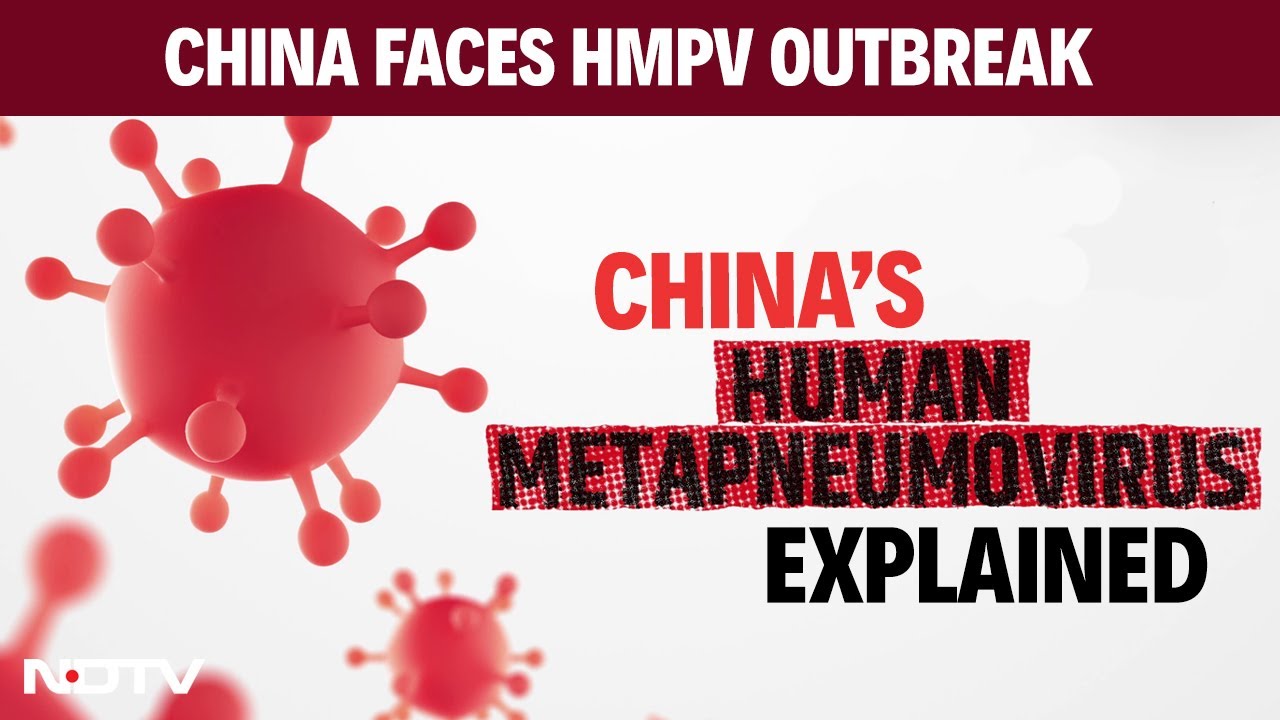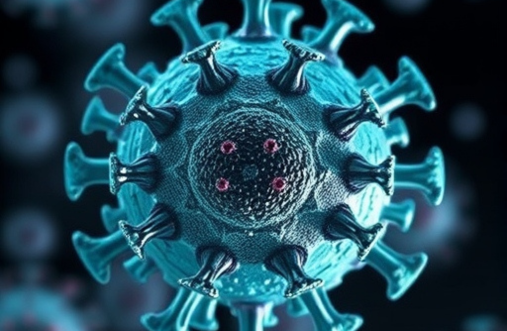The rapid rise of respiratory diseases across the world has resulted in much concern. Human Metapneumovirus (HMPV) has emerged as a major threat among those different diseases. Common manifestation includes upper respiratory passage associated symptoms but incurs severe health risk to some populations. This article discusses and said an understanding of HMPV virus symptoms, transmission mechanisms, risk groups, preventive measures, and possible treatments.

Table of Contents
ToggleWhat is the HMPV Virus?
Human Metapneumovirus (HMPV) refers to a respiratory virus that was identified for the first time in the year 2001 in the country of the Netherlands. New though, it has by now established itself as a major causative agent of respiratory infections in winter and early spring.
HMPV is a member of Paramyxoviridae family, which is the same family that contains viruses, including respiratory syncytial virus (RSV) as well as parainfluenza viruses. HMPV differs from RSV in terms of its genetics and presentation concerning symptoms and severity, though it shares a few commonalities with RSV.
This virus typically causes flu-like symptoms, but may cause respiratory illness such as pneumonia or bronchitis, especially in high-risk populations in some cases.
HMPV Virus Symptoms: What to Expect
Symptoms of the HMPV virus symptoms appear approximately three to six days after contact with the virus. The majority of individuals have mild symptoms, but precautions must be taken against the virus that could cause significant effects in some people; most especially the very young, the elderly, and those most affected with weakened immune systems.
Key Symptoms of HMPV Infection:
- Cough: Henipaviruses generally cause cough which occurs as productive cough towards the end of the infection. The cough begins dry, then becomes productive and progresses to severe conditions.
- Fever: A low-grade fever that usually accompanies HMPV and its symptoms. It is certainly not as high as in influenza, but still can produce discomfort.
- Sore Throat: Individuals infected may complain of a scratchy or sore throat, often accompanied by pain while swallowing.
- Nasal Congestion: This is another frequent symptom of HMPV – runny or stuffy nose causing respiratory difficulty and pressure in the sinus cavities.
- Shortness of Breath: It occurs when there is difficulty breathing with tightness in the chest, especially in severe cases where pneumonia or bronchitis develop as a result of the infection.
- Wheezing: Some patients may wheeze out that high-pitched whistling sound while breathing in the presence of inflammation in the airways.
In more severe cases, HMPV virus symptoms can escalate, leading to:
- Pneumonia: An infection that inflames the air sacs in the lungs, causing breathing difficulties and chest pain.
- Bronchiolitis: Inflammation of the small airways in the lungs, which can be life-threatening in infants and young children.
- Increased wheezing and chest tightness: Particularly in children and the elderly, HMPV virus symptoms may worsen, leading to persistent wheezing and difficulty breathing.
Who is at Risk for Severe HMPV Virus Symptoms?
While the symptoms of the HMPV virus symptoms can affect anyone, some populations are at a higher risk of experiencing severe illness. These include:
- Infants and Young Children: Children below five years old, particularly those less than one year old, are typically at higher risk for serious complications resulting from HMPV. In fact, they are most likely to progress rapidly towards bronchiolitis or pneumonia within this age cohort.
- Elderly Adults: The elderly have a decreased immune response after the age of 65 and are more likely to develop severe symptoms. The elderly also have other conditions that increase their susceptibility to complications, such as heart disease or diabetes.
- People with Weak Immune Systems: People undergoing chemotherapy, people with HIV/AIDS, and organ transplant receivers suffer most severe forms of respiratory diseases, including HMPV.
- Existing Lung Conditions: Such people with elder preexisting lung conditions like asthma or chronic obstructive pulmonary disease (COPD) will likely show aggravated symptoms if they are affected by HMPV infection.
Transmission of HMPV: How Does the Virus Spread?
HMPV virus symptoms are transmitted primarily through direct contact with respiratory droplets from an infected individual. The virus is highly contagious and can spread through:
- Coughing and sneezing: The droplets containing the virus are ejected into the air when a person having an infection coughs and sneezes. If someone is nearby they will breathe in these infected droplets and therefore will be infected.
- Touching contaminated surfaces: HMPV has a temporary survivability on surfaces. If someone touches an object besides a doorknob, keyboard, or cell phone that is infected with the virus and then touches that person’s face, it may give that person the flu.
- Close personal contacts: Through hand shaking, embrace, and any other contact someone may become infected by the other person.
- Airborne Transmission: In addition to that, HMPV may spread through its primary large droplets, while confined space, smaller air particles have a longer lifespan, and they might generate disease when inhaled.
It is transmissible through sharing other personal items with someone exhibiting symptoms of the HMPV virus Symptoms, such as utensils, drinking glasses, or towels.
Differentiating HMPV from Other Respiratory Infections
Since HMPV virus symptoms are similar to those of the common cold and flu, distinguishing between these illnesses can be challenging. Here’s a comparison of HMPV with other common respiratory infections:
HMPV vs. Common Cold
- Cough: In both these conditions there is the presence of a cough, but the cough pertaining to HMPV becomes more serious, especially in infants and elderly people.
- Fever: Both the HMPV and common cold exhibit mild fever in such cases.
- Duration: A common cold usually disappears within a week’s time while HMPV lasts considerably longer than that and may require intensive, mouth intervention if the symptoms exacerbate.
HMPV vs. Influenza
- Severity: Flu is usually accompanied by symptoms that are more extreme than those found with HMPV, fever, chills, and body aches, just to name a few.
- Wheezing: Wheezing and breathing difficulties are more common with HMPV than with other viruses, mainly in extremely young children and older adults.
HMPV vs. Respiratory Syncytial Virus (RSV)
- Presenting Complaints: Symptoms of RSV maybe manifest more distinctly cough and wheezes, while those caused by HMPV are far less specific and show less intense wheezing.
- Underlying Complications: RSV is the most common cause of bronchiolitis and pneumonia in young children, though similar situations can present with HMPV.
Treatment and Management of HMPV Virus Symptoms
There is no specific antiviral treatment for HMPV, and care is mainly focused on alleviating symptoms. The approach varies depending on the severity of the illness.
- Mild Cases: For mild symptoms, treatment is generally supportive. This includes:
- Rest: Adequate rest would help the immune system combat an infection.
- Hydrate: A lot of fluids will avoid the throat from drying out and keep it well-hydrated.
- OTC drugs: They include pain relievers such as acetaminophen and ibuprofen that reduce fever and pain. There may be relief from nasal obstruction through decongestants.
- Critical Conditions: Patients who develop serious symptoms such as pneumonia or respiratory difficulty are likely to need hospitalization. Some treatments may include:
- Oxygen Therapy: For those who are finding breathing difficult, oxygen levels are increased in their blood to help them breathe.
- Ventilation Support: In very serious cases, this becomes mechanical ventilation to facilitate breathing.
- Intravenous Fluids: Administered intravenously when oral hydration becomes impossible for the patient.
- Prevention of Secondary Infections: Antibiotics may be prescribed if a bacterial infection develops as a complication of HMPV.
Prevention of HMPV Virus Infection
HMPV virus symptoms that can lead to outbreaks in vulnerable patients. Therefore, these precautions will greatly reduce transmission risks:
- Hygienic Hands: Clean hands very often with soap and water for 20 seconds. This should be especially done after coughing, sneezing, or when touching shared surfaces.
- Covering Coughs and Sneezes: Use a tissue or elbow to cover your mouth and nose to prevent the spread of respiratory droplets.
- Avoiding Close Contact: Staying away from visibly ill people is best, especially during flu season or in places where HMPV is known to be present.
- Wearing the Masks: In the event of high-risk areas, wearing a mask could help in preventing the transmission of respiratory infections such as HMPV.
- Cleaning and disinfecting: Touch and disinfect commonly touched surfaces on a daily basis.
- Home isolation: When symptoms exist for HMPV, stay home so as to minimize the chances of spreading the infection to others especially those vulnerable.
Conclusion: Staying Safe from the HMPV Virus
HMPV Virus Symptoms tends to have mild symptoms that are self-limiting; however, people must keep in mind the risk the virus poses. The virus can cause serious health problems among high-risk groups like very young, old, or those with a compromised immune system. The symptoms were understood, with practicing good hygiene and seeking medical attention immediately when needed to prevent exposure and risks associated with HMPV.
As there is no specific vaccine or antivirals against this virus, hygiene, isolation, and social distancing are still the best means of prevention against the virus, including other respiratory infections.
